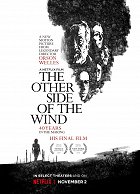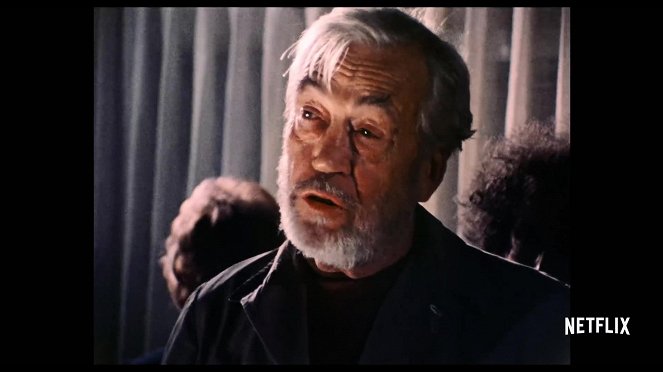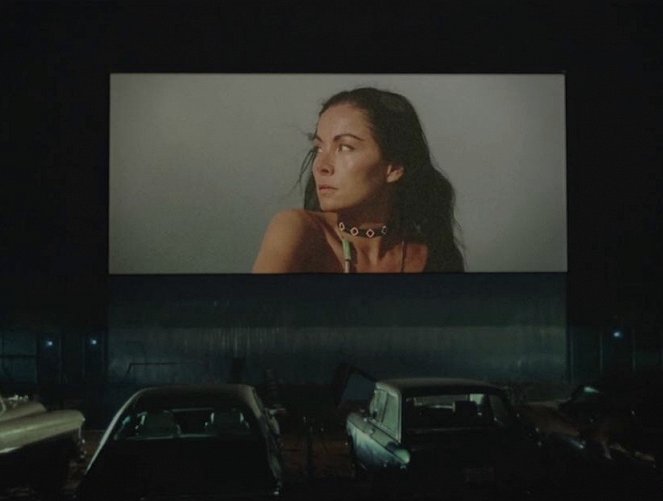Ohjaus:
Orson WellesKuvaus:
Gary GraverSävellys:
Michel LegrandNäyttelijät:
John Huston, Oja Kodar, Peter Bogdanovich, Susan Strasberg, Norman Foster, Robert Random, Lilli Palmer, Edmond O'Brien, Mercedes McCambridge (lisää)Suoratoistopalvelut (1)
Juonikuvaukset(1)
A completion and restoration of Orson Welles's unfinished film, this satire follows the final days of a legendary director striving for a comeback. (Netflix)
Videot (1)
Arvostelut (2)
Let’s leave aside the nagging doubts about how Welles’s last project would have looked if he had been able to finish it himself instead of it being later completed by his admirers and collaborators on the basis of master notes and a working fragment of the theoretical final version. When watching The Other Side of the Wind, one cannot help but to associate the finished work with the great auteur. As someone aptly noted in connection with the recent premiere of Almodovar’s Pain and Glory, every great filmmaker will make their own 8½ sooner or later. That is exactly what The Other Side of the Wind should have been for Welles. In keeping with his troubled career, however, Welles (like Fellini) does not compose an ode to his muse, the inner anguish of the artist and the intermingling of his own life with the work. Welles’s critical film shows cinema, or rather filmmaking, as chaos and a bustle of characters with completely disparate and conflicting interests, while the creator’s work made from that, or rather in spite of it, gives the impression of being an outright miracle. In the constituent motifs, it also touches on the question or inevitability of the tyrannical aspect of the creator, whose vision demands that others abandon their individuality and subordinate themselves, and thus their bodies, to the creator’s interest. Welles depicts the contrast between the artist, the work and its subjugation by viewers and criticism as a delirious struggle in which one side wants to control the work and the creator and overpower them with a barrage of questions and interpretations, while the other side needs nourishing attention, but also wants to escape. All of this shapes The Other Side of the Wind into the form of a progressive formal collage in which dozens of aspects personified by individual characters and various lenses create mad chaos against which the film-in-film passages stand as an admirable monolith of uncompromising vision. With its style, it evokes the works of leading creative personalities of the time when the material was created, with Antonioni at the fore, and Welles demonstrates his brilliant functional formalism. There is no doubt that, despite its distinctiveness and formal avant-garde nature, The Other Side of the Wind would have found in its time, i.e. the 1970s, a more responsive audience in tune with the then current style of the sovereignly auteur work of the canonical masters. On the other hand, its contemporary appearance as a relic from the grave gives the picture a superstructure of that great treasure, which is finally emerging from the depths of time to the surface and speaking to our stale cinephile core.
()
Jake Hannaford, a passionate hunter of Irish descent, as well as a chauvinist and racist, is not so much an alter ego of Welles as he is of John Huston. The Other Side of the Wind captures the last days of classic Hollywood, or rather the decline of the world represented by macho Huston-type patriarchs. Because of her indigenous origins, Hannaford sees the lead actress of his film as an exotic exhibit and mockingly calls her “Pocahontas”. The actress initially reacts with hateful looks and later vents her frustration by shooting at figurines. Hannaford’s publicist, based on film critic Pauline Kael (who couldn’t stand Welles), is not reluctant to engage in open verbal confrontation with the director when she repeatedly points out the macho posturing that he hides behind. The women defend themselves and the men are not happy about it. ___ By giving the female characters more space and enabling them to give expression to their sexuality, Welles comes to term not only with Hollywood, but also with his own legacy. Like late-period John Ford, whom Welles greatly admired, he critically reassesses the themes of his earlier films. At the same time, however, doubts arise as to whether the way in which Oja Kodar’s character is presented in Hannaford’s film (sexually aggressive, captivating an inexperienced male protagonist) also says something about Welles. ___ Hannaford's unfinished magnum opus is clearly a parody of the works of American filmmakers who during the New Hollywood era responded diligently to European works by shooting pretentious and incoherent would-be art films packed with eroticism and conspicuous symbolism. More or less naked, beautiful and young actors wordlessly wander around each other in dreamlike interiors and exteriors. It doesn’t seem to matter that the characters don’t follow the sequences of Hannaford’s film in the right order (if anyone actually has any idea what the order is supposed to be). As Welles divulged in an interview, he shot the film with a mask on, as if he wasn’t himself. Therefore, why should we associate with him what Hannaford’s work says about women and female sexuality? ___ The parodic imitative style, which was not peculiar to Welles, was due also to the raw, intentionally imperfect hand-held shots from a party, reminiscent of the then fashionable cinema-verité. Completed long after Welles’s death, the film is basically a combination of two styles that Welles would not have employed. The question of who Jake Hannaford was (like the question of who Charles Foster Kane was in Citizen Kane) is less relevant in this context than the question of who the creator is and who is imitating whom, which Welles quite urgently asks in the mockumentary F for Fake, which, with its fragmentary style, has the most in common with The Other Side of the Wind. ___ For example, Peter Bogdanovich, who was considered to be an imitator of Welles in the 1970s, plays Hannaford’s most diligent plagiarist in the film. The defining of his character through imitation of someone else, however, is done ad absurdum, when he occasionally begins to imitate James Cagney or John Wayne in interviews with journalists. Though Welles incorporates media images of influential figures into his film, he also ridicules them as improbable and untruthful. All of these contradictions could be part of an effort to offer, instead of the retelling of one person’s life story, an expression of doubtfulness about the ability to recognise who someone really is. ___ Though, thanks to Netflix, Welles’s film can theoretically be seen by far more viewers than would have been possible at the time of its creation, the manner of its presentation by the streaming company recalls a moment from Hannaford’s party, when the producer lays down reels of film and says to those interested in a screening, “Here it is if anybody wants to see it”. Netflix helped to finish the film and raised its cultural capital by presenting it at a prestigious festival, and then more or less abandoned it, as if cinephiles who love more demanding older films were not a sufficiently attractive audience segment. ___ With Welles’s involvement, the film, which was completed 48 years after it was started, would have perhaps been more coherent, had a more balanced rhythm and conveyed a less ambiguous message. At the same time, however, all of its imperfections draw our attention to its compilation-like nature, or rather the convoluted circumstances of its creation – we think about who is in charge of the work, who created it (perhaps Jake Hannaford, whose “Cut!” is heard after the closing credits) and what it says about him, which was probably Welles’s intention. The Other Side of the Wind is a good promise of a great film. 80%
()
(vähemmän)
(lisää)


